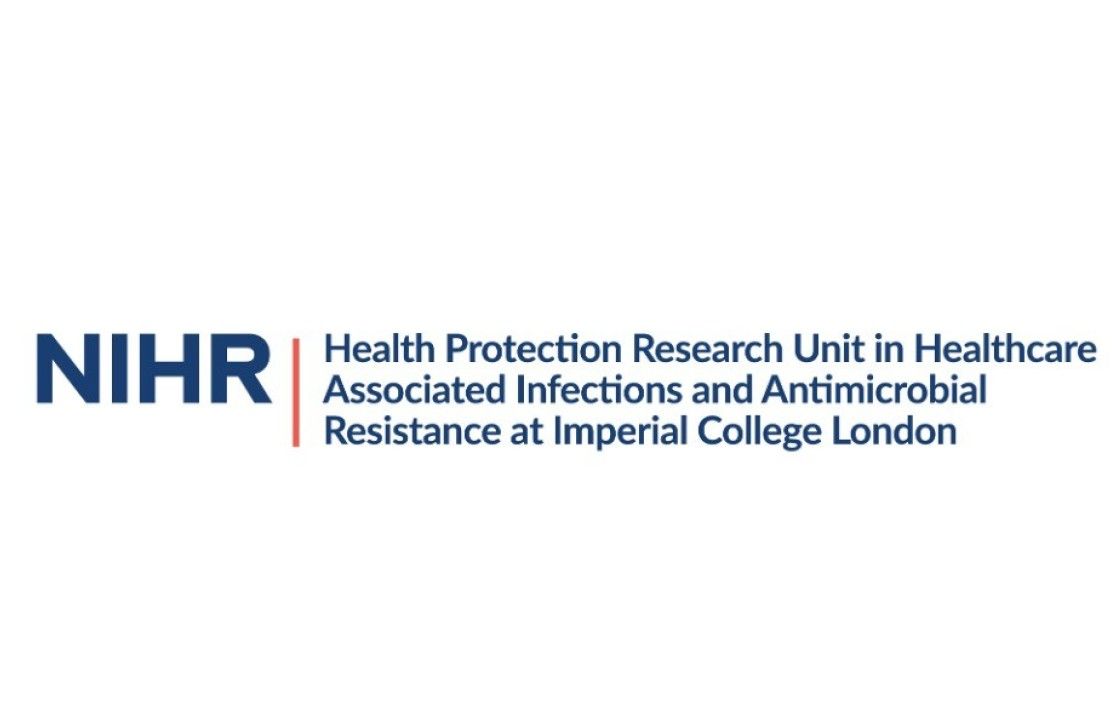Results
- Showing results for:
- Reset all filters
Search results
-
Journal articleZingg W, Hopkins S, Gayet-Ageron A, et al., 2017,
Health-care-associated infections in neonates, children, and adolescents: an analysis of paediatric data from the European Centre for Disease Prevention and Control point-prevalence survey
, LANCET INFECTIOUS DISEASES, Vol: 17, Pages: 381-389, ISSN: 1473-3099 -
Journal articleIwami M, Ahmad R, Castro Sanchez E, et al., 2017,
Capacity of English NHS hospitals to monitor quality in infection prevention and control using a new European framework: a multi-level qualitative analysis.
, BMJ Open, Vol: 7, ISSN: 2044-6055Objective: (1) To assess the extent to which current English national regulations/policies/guidelines and local hospital practices align with indicators suggested by a European review of effective strategies for infection prevention and control (IPC); (2) to examine the capacity of local hospitals to report on the indicators and current use of data to inform IPC management and practice. Design: A national and local-level analysis of the 27 indicators was conducted. At the national level, documentary review of regulations/policies/guidelines was conducted. At the local level: a) documentary review of 14 hospitals to determine the capacity to report on performance; b) qualitative interviews with three senior managers from five hospitals and direct observation of hospital wards to identify gaps in use of these indicators to improve IPC management and practice.Setting: Two acute English National Health Service (NHS) trusts and one NHS foundation trust (14 hospitals).Participants: Three senior managers from five hospitals for qualitative interviews.Primary and secondary outcome measures: As primary outcome measures, a ‘Red-Amber-Green’ (RAG) rating was developed reflecting how well the indicators were included in national documents or their availability at local organisational level. The current use of the indicators to inform IPC management and practice was also assessed. Secondary outcome measure includes the assessment of gaps across national and local levels by comparing the RAG rating results.ResultsNational regulations/policies/guidelines largely cover the suggested European indicators. The ability of individual hospitals to report some of the indicators at ward level varies across staff groups, which may mask required improvements. A reactive use of staffing-related indicators was observed rather than the suggested prospective strategic approach for IPC management.ConclusionsFor effective patient safety and infection prevention in English hospitals, ro
-
Book chapterCastro Sanchez EM, Holmes A, Pittet D, 2017,
Chapter 28: Institutional safety climate.
, Hand Hygiene: A Handbook for Medical Professionals, Editors: Wiley-Blackwell -
Journal articleRawson T, Charani E, Moore L, et al., 2016,
Vancomycin therapy in secondary care; investigating factors that impact therapeutic target attainment
, Journal of Infection, Vol: 74, Pages: 320-324, ISSN: 1532-2742 -
Journal articleJauneikaite E, Khan-Orakzai Z, Kapatai G, et al., 2016,
Nosocomial outbreak of drug resistant Streptococcus pneumoniae serotype 9V in an adult respiratory medicine ward
, Journal of Clinical Microbiology, Vol: 55, Pages: 776-782, ISSN: 1098-660XStreptococcus pneumoniae infections arising in hospitalized patients are often assumed to be sporadic, and linked to community carriage. Here, whole genome sequencing was used to demonstrate nosocomial acquisition of antimicrobially-resistant ST156-9V S. pneumoniae in 3 respiratory patients resulting in two bacteremias and one lower respiratory tract infection. Two of the cases arose in patients who had recently been discharged from hospital and were re-admitted from the community. Nosocomial spread was suspected solely because of a highly unusual resistance pattern and case presentations within 24h of one another. The outbreak highlights a potential for rapid transmission and short incubation period in the respiratory ward setting.
-
Journal articleRawson T, Charani E, Moore L, et al., 2016,
Mapping the decision pathways of acute infection management in secondary care among UK medical physicians: a qualitative study
, BMC Medicine, Vol: 14, ISSN: 1741-7015BackgroundThe inappropriate use of antimicrobials drives antimicrobial resistance. We conducted a study to map physician decision making processes for acute infection management in secondary care to identify potential targets for quality improvement interventions.MethodsNewly qualified to Consultant level physicians participated in semi-structured interviews. Interviews were audio recorded and transcribed verbatim for analysis using NVIVO11.0 software. Grounded theory methodology was applied. Analytical categories were created using constant comparison approach to the data and participants were recruited to the study until thematic saturation was reached. ResultsTwenty physicians were interviewed. The decision pathway for the management of acute infections follows a Bayesian-like step-wise approach, with information processed and systematically added to prior assumptions to guide management. The main emerging themes identified as determinants of the decision making of individual physicians were; (i) perceptions of providing “optimal” care for the patient with infection by providing rapid and often intravenous therapy; (ii) perceptions that stopping/de-escalating therapy was a senior doctor decision with junior trainees not expected to contribute; (iii) expectation of interactions with local guidelines and microbiology service advice. Feedback on review of junior doctor prescribing decisions was often lacking, causing frustration and confusion on appropriate practice within this cohort. ConclusionInterventions to improve infection management must incorporate mechanisms to promote distribution of responsibility for decisions made. The disparity between expectations of prescribers to start but not review/stop therapy requires addressing urgently with mechanisms to improve communication and feedback to junior prescribers to facilitate their continued development as prudent antimicrobial prescribers.
-
Journal articleVila-Candel R, Navarro-Illana P, Navarro-Illana E, et al., 2016,
Determinants of seasonal influenza vaccination in pregnant women. A cross-sectional study in Valencia, Spain
, BMC Infectious Diseases, Vol: 16, ISSN: 1471-2334BackgroundIn most countries the coverage of seasonal influenza vaccination in pregnant women is low. We investigated the acceptance, reasons for rejection and professional involvement related to vaccine information in pregnant women in Valencia, Spain.MethodsObservational retrospective study in 200 pregnant women, 100 vaccinated and 100 unvaccinated, were interviewed during the 2014/2015 vaccination campaign. Electronic medical records, immunization registry and telephone interviews were used to determine reasons for vaccination and immunization rejection.Results40.5% of pregnant women in the health department were vaccinated. The midwife was identified as source of information for 89% of women. The vaccine was rejected due to low perceptions of risk of influenza infection (23%), lack of information (19%), considering the vaccine as superfluous (16%), close proximity of delivery date (13%) and fear of side effects (12%).ConclusionPregnant women in Spain declined to be vaccinated due to under-estimation of the risk of contracting or being harmed by influenza, and lack of information. Interventions aiming to optimize vaccination coverage should include information addressing the safety and effectiveness of the current vaccine together with improved professional training and motivation.
-
Journal articleNaylor NR, Silva S, Kulasabanathan K, et al., 2016,
Methods for estimating the burden of antimicrobial resistance: a systematic literature review protocol
, Systematic Reviews, Vol: 5, ISSN: 2046-4053Background:Estimates of the burden of antimicrobial resistance (AMR) are needed to ascertain AMR impact, evaluate interventions and to allocate resources efficiently. Recent studies have estimated health, cost and economic burden relating to AMR, with outcomes of interest ranging from drug-bug resistance impact on mortality in a hospital setting to total economic impact of AMR on the global economy. However, recent collation of this information has been largely informal, with no formal quality assessment of the current evidence base (e.g. with predefined checklists). This review therefore aims to establish what perspectives and resulting methodologies have been used in establishing the burden of AMR, whilst also ascertaining the quality of these studies. Methods:The literature review will identify relevant literature using a systematic review methodology. MEDLINE, EMBASE, Scopus and EconLit will be searched utilising a predefined search string. Grey literature will be identified by searching within a predefined list of organisational websites. Independent screening of retrievals resultswill be performed in a two-stage process (abstracts and full texts), utilising a pre-defined inclusion and exclusion criteria. Data will be extracted into a data extraction table and descriptive examination will be performed. Study quality will be assessed using the Newcastle-Ottawa scales and the Philips checklists where appropriate. A narrative synthesis of the results will be presented. Discussion:This review will provide an overview of previous health, cost and economic definitions of burden and the resultant impact of these different definitions on the burden of AMR estimated. The review will also explore the methods that have been used to calculate this burden and discuss resulting study quality. This review can therefore act as a guide to methods for future research in this area.Trial Registration:This review has been registered with the PROSPERO International Prospective Regis
-
Journal articleRawson T, Moore L, Hernandez B, et al., 2016,
Patient engagement with infection management in secondary care: a qualitative investigation of current experiences
, BMJ Open, Vol: 6, ISSN: 2044-6055Objective To understand patient engagement with decision-making for infection management in secondary care and the consequences associated with current practices.Design A qualitative investigation using in-depth focus groups.Participants Fourteen members of the public who had received antimicrobials from secondary care in the preceding 12 months in the UK were identified for recruitment. Ten agreed to participate. All participants had experience of infection management in secondary care pathways across a variety of South-East England healthcare institutes. Study findings were subsequently tested through follow-up focus groups with 20 newly recruited citizens.Results Participants reported feelings of disempowerment during episodes of infection in secondary care. Information is communicated in a unilateral manner with individuals ‘told’ that they have an infection and will receive an antimicrobial (often unnamed), leading to loss of ownership, frustration, anxiety and ultimately distancing them from engaging with decision-making. This poor communication drives individuals to seek information from alternative sources, including online, which is associated with concerns over reliability and individualisation. Failures in communication and information provision by clinicians in secondary care influence individuals’ future ideas about infections and their management. This alters their future actions towards antimicrobials and can drive prescription non-adherence and loss to follow-up.Conclusions Current infection management and antimicrobial prescribing practices in secondary care fail to engage patients with the decision-making process. Secondary care physicians must not view infection management episodes as discrete events, but as cumulative experiences which have the potential to shape future patient behaviour and understanding of antimicrobial use.
-
Journal articleCastro-Sanchez E, Kyratsis Y, Iwami M, et al., 2016,
Serious electronic games as behavioural change interventions in healthcareassociated infections and infection prevention and control: a scoping review of the literature and future directions
, ANTIMICROBIAL RESISTANCE AND INFECTION CONTROL, Vol: 5, ISSN: 2047-2994- Author Web Link
- Open Access Link
- Cite
- Citations: 11
This data is extracted from the Web of Science and reproduced under a licence from Thomson Reuters. You may not copy or re-distribute this data in whole or in part without the written consent of the Science business of Thomson Reuters.

